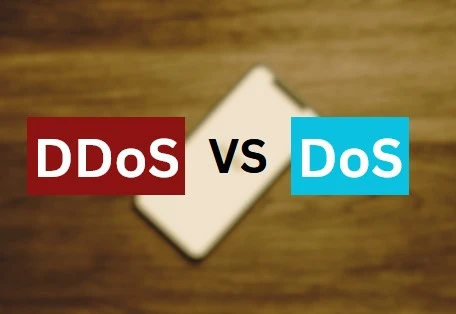DDoS, or Distributed Denial of Service, is an attack and a severe threat in cybersecurity which aims to interrupt the running operations and functions by changing the status of “availability” to “denial” or “not available” through flooding the network, servers, online services, and websites. To harm the organizations, individuals, and even the government entities, to cause the businesses lose their money and reputation. The intention behind these attacks can come from hacktivists who aim to take a specific company down or from cybercriminals who want to have fun by targeting the weaknesses of cyber security.
Table of Contents
What DDoS Attack Mean?
Ddos attack do flood the network with illegitimate traffic or requests to an attempt in cyber security called denial of service attack. The adversaries with such attacks aim to exhaust the target until it becomes unavailable. The complexity of DDoS attacks has increased, which makes it a concern for professionals in cyber security as well as organizations.
DDoS vs. DoS Attack

Using one single network to attack a target with fake requests is defined as Denial of Service. On the other hand, using many connected devices to attack one target with fake requests is called Distributed Denial of Service attack.
Botnet
The attacker hacks into a device and inserts malicious code to use the device as command and control. The infected devices are instructed by their attacker to fulfill the commands given by them. A botnet is a computer that is infected by a network and is being controlled by hackers.
What are the types of DDoS attacks?
DDoS attacks are in different formats, and each one of them targets a separate vulnerability within the system. Mitigating attacks effectively by understanding different variations is an important aspect of being able to defend against them.
- SYN Flood Attacks: A synchronization attack is defined as exploiting the TCP (three-way) handshake process by flooding it with SYN requests until the resources are exhausted and it is not able to receive any legitimate requests either.
- UDP Flood Attacks: flooding the target with User Datagram Protocol (UDP) packets. As UDP is a connectionless protocol that does not require a handshake, it can consume the target’s resources quickly, which will lead to service disruption.
- ICMP Flood Attacks: An Internet Control Message Protocol (ICMP) attack happens when the target is flooded with a large number of ICMP packets. disregarded performances, or it becomes completely unavailable if this attack occurs.
- HTTP Flood Attacks: Flooding the web server with a huge number of requests that look like an HTTP (Hyper Text Transfer Protocol) is defined as an HTTP Flood Attack.
- Slowloris Attacks: In this attack, incomplete HTTP requests in huge numbers are sent slowly to web servers. This keeps the connection open for as long as the attacker would like, until the server becomes unresponsive.
- NTP Amplification Attacks: NTP amplification attacks abuse the Network Time Protocol’s (NTP), which returns information on the last clients that accessed a particular NTP server. Attackers send spoofed requests to multiple NTP servers, redirecting the responses to the target’s IP address and overwhelming it with amplified traffic.
- DNS Amplification Attacks: Exploiting the Domain Name System (DNS) protocol by sending small packets to the public DNS server with IPs that are spoofed leads to service disruption due to the large response received on the target of fake traffic.
- Smurf Attacks: This type of attack is dependent on IP broadcast addressing and ICMP. The attacker sends the request to IP broadcast addresses from the spoofed IP of the target, which causes the systems that are in the network to respond to the victim for every initiated packet.
- Application layer attacks: This attack focuses on the exploitation of the target application itself. Attackers must acquire big computational power or vulnerabilities in the application to be successful.
- Amplified or reflective Attacks: Using legitimate services such as DNS or NTP servers to amplify the volume of traffic directed toward the target is called reflective or amplified. They generate large responses by sending small requests to the server.
How to mitigate DDoS attacks?
The cybersecurity department should implement various layers of protection that combine network monitoring, traffic analysis, and specialized security solutions. to be able to defend against such an attack.
Network monitoring and traffic analysis
Implementation of network monitoring tools and systems that analyze traffic will detect the threat pattern of a DDoS attack. By monitoring continuously, patterns can be identified and mitigated earlier.
Rate Limit
Traffic limiting can help manage the traffic on the network. threshold has to be in place for specific sources or protocols. Organizations should control the bandwidth of their networks; this can help mitigate resource usage and protect against such attacks.
Redundancy and load balancing
Techniques that distribute traffic across different servers and data centers through redundancy and load balancing will help the organization prevent one single point failure.
Web Application Firewall (WAF)
Web application firewalls play a good role in protecting web applications. Providing application-layer defense mechanisms can be helpful in identifying and blocking malicious traffic. It will ensure that the application or website is secure and available.
Cloud-Based Protection
Cloud-based protection services allow companies to defend against such attacks before they reach the network infrastructure. Huge-scale utilization services are offered, which can filter malicious traffic and ensure that accessibility is uninterrupted.

